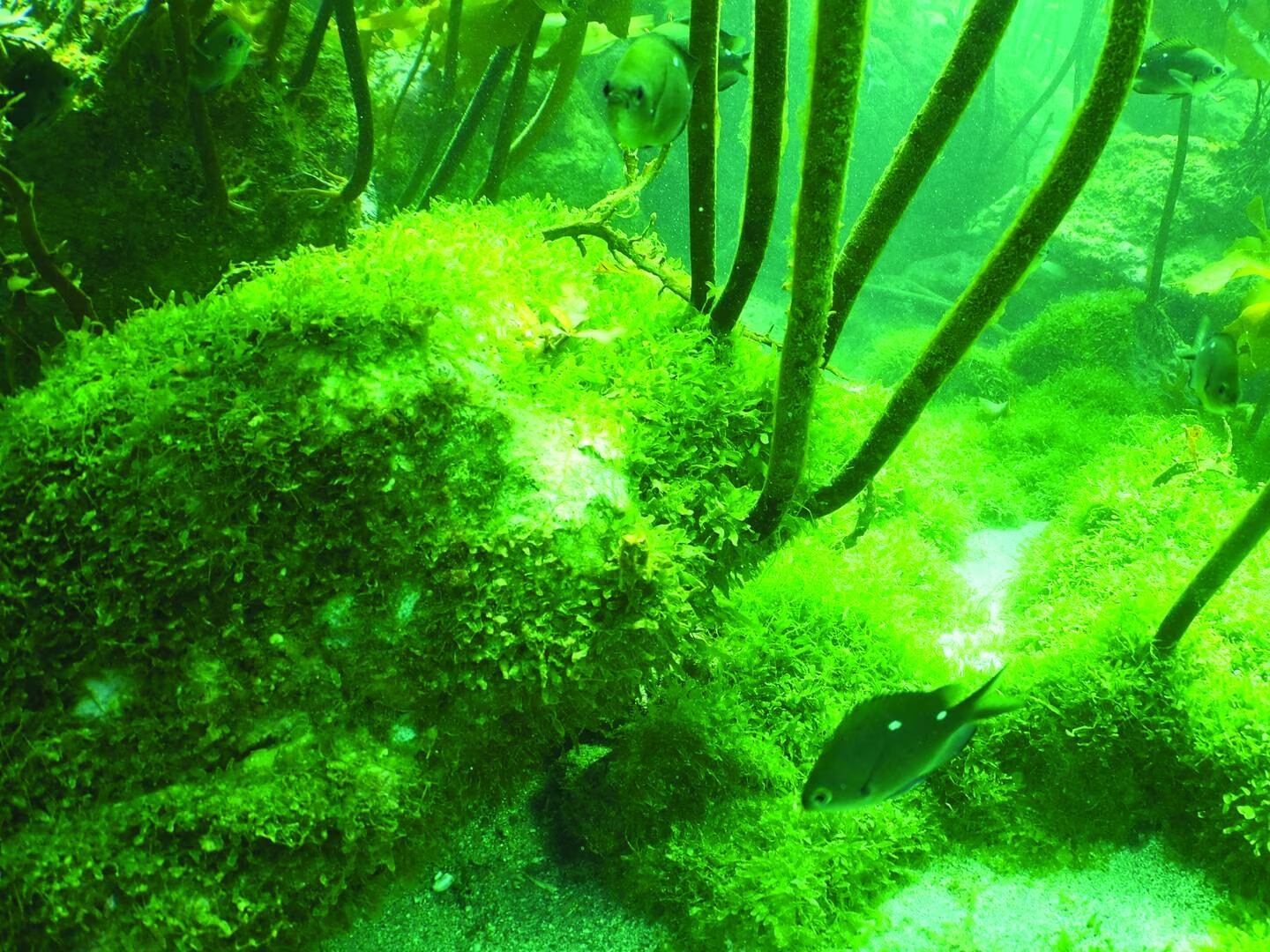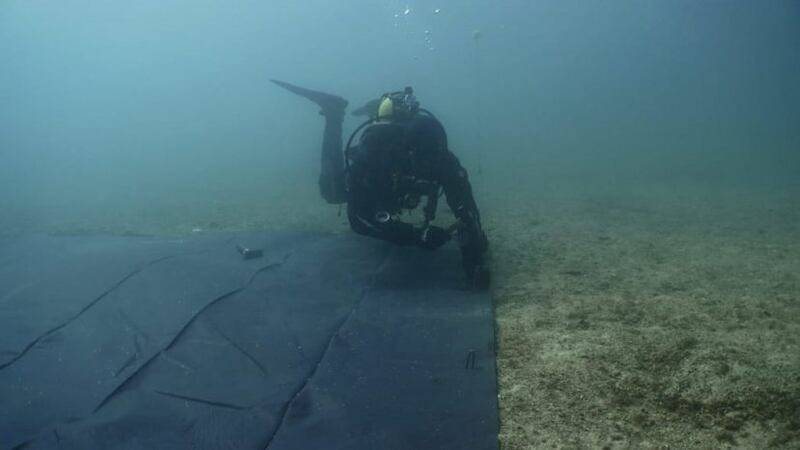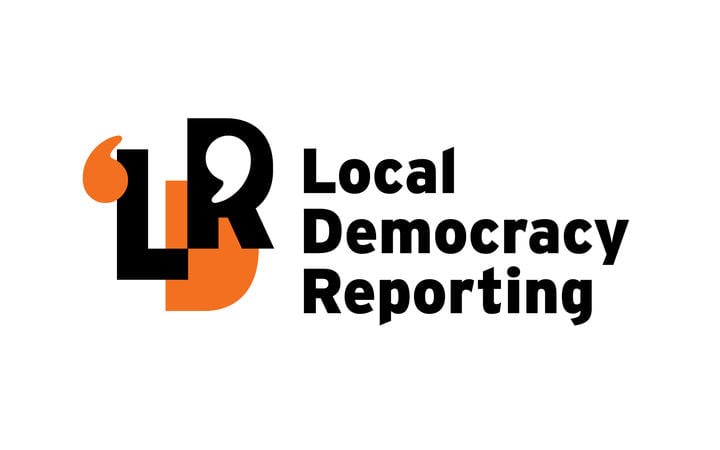NRC marine biosecurity officer Toby Dickson attaches the edge of a heavy tarpaulin mat to the Albert Channel seafloor in the New Zealand-first caulerpa treatment trial set up in the Bay of Islands on 13 June 2023. Photo / Supplied / Brett Sutton, Marine Environmental Field Services
Northland Regional Council divers have today set up a New Zealand-first caulerpa attack tool in the Bay of Islands.
The new-to New Zealand approach is being trialled by Northland Regional Council (NRC) and Ministry for Primary Industries (MPI) in an isolated patch of caulerpa in Albert Channel. It uses swimming pool chlorine tabs under a large heavy black tarpaulin attached to the sea floor with the equivalent of giant tent pegs, in a two-pronged attack on the superspreader invasive seaweed.
The tool has been successfully used to fight caulerpa in California. Technical specialists from around New Zealand recently attended an online meeting with Californian caulerpa experts to learn more about tools to fight the pest.
NRC divers put down the trial treatment tool in place today on a small, isolated patch of caulerpa about 500 metres outside the boundary of the government's less than 24-hour-old Controlled Area Notice (CAN) legally banning anchoring and fishing.
The isolated patch of about one square metre of caulerpa has been covered in a 12 square metre heavy black tarpaulin anchored to the sea floor with tent pegs.
More than 1000 hectares of the Bay of Islands moana now has a fishing and anchoring ban due to new government biosecurity controls and a mana whenua rāhui in the wake of caulerpa being found across 200 hectares of the iconic New Zealand visitor marine destination. The bans took effect on Monday.
NRC marine biosecurity specialist Kaeden Leonard said four chlorine pool tabs expected to kill the plant had been put on top of the caulerpa. The heavy black tarpaulin went over the top of this. It was aimed at starving any of the runners that spread horizontally out from the plant of light.
The tarpaulin covers an area three times bigger than the caulerpa clump. Its use aims to also seal in the chlorine chemical to maximise the chemical's impact.
A second adjacent much smaller area of caulerpa has also been treated with a single chlorine tab and covered in a one square metre of tarpaulin.
NRC divers will return to the site to check progress in a month, monitoring in the meantime.

Bright green invasive caulerpa seaweed smothering the delicate marine ecosystem at Great Barrier Island. Photo / Glenn Edney
The trial is located near Mahenotiti Island and is hitting the additional small isolated caulerpa patches found in NIWA's eastern Bay of Islands surveillance checking late on Friday afternoon.
Specialist NRC divers will continue to carry out surveillance dives in the immediate area of this isolated outcrop of Bay of Islands exotic caulerpa to provide confidence that all exotic Caulerpa around the trial site has been located.
Mats covering the sea floor have been used in Great Barrier Island caulerpa treatment trials that used huge quantities of salt to try and kill the pest. However, these mats were hessian.
The Bay of Islands' trial technology has previously been used in California to treat small areas, but of a different species of the exotic pest called caulerpa taxifolia. This type of caulerpa is known as aquarium caulerpa and can make people sick. It contains a toxin to prevent animals from eating it. The toxin accumulates in the flesh of fish which eat caulerpa taxifolia, this in turn being passed on to humans. Caulerpa taxifolia is banned in Aotearoa.
The Bay of Islands caulerpa infestation is made up of caulerpa brachypus and caulerpa parvifolia, the same two species as are found on Great Barrier Island - only about 100 kilometres to the south by sea from the Bay of Islands. These two species are not toxic.


